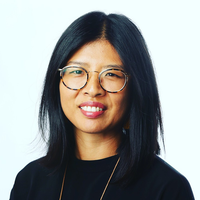
Published 12:03 p.m. ET May 9, 2023
Editorial Note: Blueprint may earn a commission from affiliate partner links featured here on our site. This commission does not influence our editors’ opinions or evaluations. Please view our full advertiser disclosure policy.

Getty Images
Savings account rates haven’t budged over the past week, though you can earn much higher yields now compared to this time last year. This is a positive development but when selecting a savings account, make sure you consider fees, customer service and whether the bank offers a user-friendly digital experience.
Savings accounts — all deposit levels
Savings accounts yielded anemic returns following the Great Recession thanks to the Fed keeping borrowing costs low in order to cajole economic growth.
This policy of low rates was abandoned following the government’s extensive spending during the pandemic, which caused the Fed to significantly boost interest rates to offset soaring inflation. That then prompted banks and credit unions to raise rates for savers.
The highest interest rate on a standard savings account today is 4.80%, per Bankrate, up from one week ago. Meanwhile, the average APY (annual percentage yield) for a traditional savings account, as reported by Bankrate, is 1.28%.
APY represents the actual return your account will generate in a year, taking into account compound interest — the interest earned on both the principal and previously accumulated interest in your account.
For instance, if you were to invest $1,000 at a 4.80% rate (the current high) for one year, you would earn approximately $50 in interest, assuming daily compounding and no additional contributions.
Savings account rates — $10,000 minimum deposit
The average APY for savings accounts requiring a minimum deposit of $10,000 was 0.25%, unmoved over the past week. However, numerous financial institutions offer considerably higher rates.
Some of the top high-yield savings accounts, for instance, currently feature rates of 4.00% or higher.
Frequently asked questions (FAQs)
A high-yield savings account is ideal for those who require a readily accessible option for funds that won’t be touched more than once a week. It’s a recommended choice for most people.
However, if you already have a well-balanced investment portfolio with high earning potential and a convenient savings account with a trusted bank, you might not need or want a high-yield savings account. In this situation, managing an additional account could be an unnecessary hassle.
A savings account offers a secure space for you to store money that isn’t required for daily use. Keeping savings separate from your everyday funds can help reduce the temptation to spend impulsively.
A savings account can act as a rainy-day fund, earning interest while maintaining liquidity.
Blueprint is an independent publisher and comparison service, not an investment advisor. The information provided is for educational purposes only and we encourage you to seek personalized advice from qualified professionals regarding specific financial decisions. Past performance is not indicative of future results.
Blueprint has an advertiser disclosure policy. The opinions, analyses, reviews or recommendations expressed in this article are those of the Blueprint editorial staff alone. Blueprint adheres to strict editorial integrity standards. The information is accurate as of the publish date, but always check the provider’s website for the most current information.







